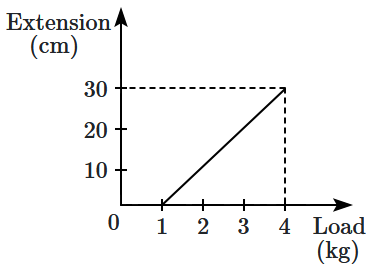A particle free to move along the x-axis has potential energy given by for , where k is a positive constant of appropriate dimensions. Then
(1) At point away from the origin, the particle is in unstable equilibrium
(2) For any finite non-zero value of x, there is a force directed away from the origin
(3) If its total mechanical energy is k/2, it has its minimum kinetic energy at the origin
(4) For small displacements from x = 0, the motion is simple harmonic
The kinetic energy acquired by a mass m in travelling a certain distance d starting from rest under the action of a constant force is directly proportional to
(1)
(2) Independent of m
(3)
(4) m
An open knife edge of mass 'm' is dropped from a height 'h' on a wooden floor. If the blade penetrates upto the depth 'd' into the wood, the average resistance offered by the wood to the knife edge is
(1) mg
(2)
(3)
(4)
A body is moving along a straight line by a machine delivering constant power. The distance moved by the body in time t is proportional to
(1) t1/2
(2) t3/4
(3) t3/2
(4) t2
The relationship between force and position is shown in the given figure (in a one-dimensional case). The work done by the force in displacing a body from \(x = 1~\text{cm}\) to \(x = 5~\text{cm}\) is:

1. \(20~\text{ergs}\)
2. \(60~\text{ergs}\)
3. \(70~\text{ergs}\)
4. \(700~\text{ergs}\)

1. \(0.1\text{ N/cm}\)
2. \(5\text{ N/cm}\)
3. \(0.3\text{ N/cm}\)
4. \(1\text{ N/cm}\)
Adjacent figure shows the force-displacement graph of a moving body, the work done in displacing body from x = 0 to x = 35 m is equal to-
(1) 50 J
(2) 25 J
(3) 287.5 J
(4) 200 J
A 10kg mass moves along x-axis. Its acceleration as a function of its position is shown in the figure. What is the total work done on the mass by the force as the mass moves from x = 0 to x = 8 cm ?
(1) 8 × 10–2 joules
(2) 16 × 10–2 joules
(3) 4 × 10–4 joules
(4) 1.6 × 10–3 joules
A toy car of mass 5 kg moves up a ramp under the influence of force F plotted against displacement x. The maximum height attained is given by


1. ymax = 20 m
2. ymax = 15 m
3. ymax = 11 m
4. ymax = 5 m
The graph between the resistive force \(F\) acting on a body and the distance covered by the body is shown in the figure. The mass of the body is \(25\) kg and the initial velocity is \(2\) m/s. When the distance covered by the body is \(4\) m, its kinetic energy would be:
1. \(50\) J
2. \(40\) J
3. \(20\) J
4. \(10\) J









